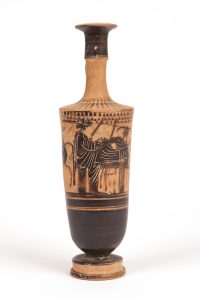We hope that many of you enj oyed an excellent view of the full ‘harvest’ moon last month. The University of Reading community welcomed this moon a few days earlier, on Saturday 14th September, as part of NASA’s International Observe the Moon Night. When asked why they had chosen to observe the waxing or growing moon, a few days before its fullness, James O’Donoghue, Associate Professor in Planetary Astronomy, explained that we wanted to be able to view the surface of the moon emerging from the dark side of the moon, which is best done a few days before the new moon. On the night, hundreds of visitors, staff and students enjoyed viewing the moon through telescopes on a clear night, supported by the University of Reading’s Meteorology Department and Astronomy Club.
oyed an excellent view of the full ‘harvest’ moon last month. The University of Reading community welcomed this moon a few days earlier, on Saturday 14th September, as part of NASA’s International Observe the Moon Night. When asked why they had chosen to observe the waxing or growing moon, a few days before its fullness, James O’Donoghue, Associate Professor in Planetary Astronomy, explained that we wanted to be able to view the surface of the moon emerging from the dark side of the moon, which is best done a few days before the new moon. On the night, hundreds of visitors, staff and students enjoyed viewing the moon through telescopes on a clear night, supported by the University of Reading’s Meteorology Department and Astronomy Club.
 International Observe the Moon Night celebrates the cultural impact the Moon has had throughout history as well as lunar observation and science, so James reached out to colleagues in Humanities who might like to talk about their moon-related research. Four members of the school of Humanities shared their research: Dr Tony Capstick (English Language and Applied Linguistics), Prof. Anne Lawrence-Mathers (History), Cong Xia Li (Department of Languages and Cultures) and our own Prof. Amy Smith (Classics), who spoke about The Moon in Ancient Athens’ Festival Calendar. Ancient Greeks used the phases of the moon to time their festivals and started each month with a new moon. Amy’s current research involves the material evidence of Athenian festivals so this gave her an opportunity to think and talk about the rare personifications and other images of the moon and months in Athenian art.
International Observe the Moon Night celebrates the cultural impact the Moon has had throughout history as well as lunar observation and science, so James reached out to colleagues in Humanities who might like to talk about their moon-related research. Four members of the school of Humanities shared their research: Dr Tony Capstick (English Language and Applied Linguistics), Prof. Anne Lawrence-Mathers (History), Cong Xia Li (Department of Languages and Cultures) and our own Prof. Amy Smith (Classics), who spoke about The Moon in Ancient Athens’ Festival Calendar. Ancient Greeks used the phases of the moon to time their festivals and started each month with a new moon. Amy’s current research involves the material evidence of Athenian festivals so this gave her an opportunity to think and talk about the rare personifications and other images of the moon and months in Athenian art.

Another part of the evening’s programme took us virtually to Mediterranean, specifically to view the Moon live from Cyprus, for a ‘Remote Observation’ of the Moon with Agapios Elia in discussion with David Arditti, the British Astronomical Association‘s President.
The full programme for the evening is here. As it turns out the event was booked out almost immediately, but you can catch up with it on a YouTube broadcast hosted by the Royal Astronomical Society.





